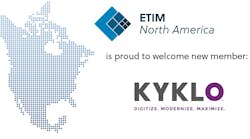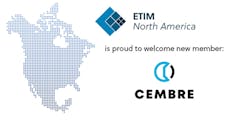In Electrical Wholesaling's recent survey of distributors' customers, we were a little surprised by one of the recurring themes. We asked them what they would like to tell their distributors if they could gather them all in a room at one time, and several suggested that it would be nice to be able to go online and check their distributors' product availability, check the status of existing orders and place new orders for will-call.
Huh? Electrical distributors have had about 15 years now to figure out how to handle business over the web. So, why are so many customers telling us they're frustrated by attempts to do business online with their local distributors — frustrated enough to shift a significant number of their purchases to online sources such as www.e-conolight.com, Ruud Lighting, Newark Electronics, www.1000bulbs.com, Amazon and eBay?
Checking in with some of the industry's largest distribution software providers, we found that a majority of their customers do offer some kind of web storefront, but just barely. Jason Hatfield, senior product manager for e-commerce and business-to-business (B2B) products at Activant Solutions, said about 60 percent to 65 percent of the company's distributor users implement the web storefront package that the company offers as an add-on to its core enterprise resource planning (ERP) systems.
“That means something like 30 to 40 percent don't. I'm surprised that they make it without that type of solution,” Hatfield said. He suggests that many of the distributors that don't offer online storefronts may be primarily niche distributors, distributors in rural areas where bandwidth issues are more significant and customers don't look to do business online, and a certain number of distributors opt for custom third-party websites instead of Activant's offerings. For that reason he said he wouldn't expect to see 100 percent adoption.
The assumption that most electrical distributors wouldn't invest heavily in online storefronts until enough of their customers said they wanted to do business that way has been around for a long time. Some have suggested all along that it would take a generational change before demand was sufficient to justify the investment. Our survey of end users (see sidebar “Your Customers and the Internet”) and simple observation suggest otherwise. It didn't take a generational change for the vast majority of distributor executives who attend industry conferences to spend every coffee break thumbing their Blackberries and iPhones, or for online holiday shopping to take a serious chunk out of brick-and-mortar retail. Those purchases aren't all being made by kids. Instead, it's clear that the tipping point is already behind us.
So what's really keeping so many distributors from making the move to build a significant and useful online presence? And once you do have a storefront in the ether, how do you maximize its value?
Among the obstacles are some frequent misconceptions. For instance, ever since the dot-com bubble days of the late 1990s there have been concerns that an online storefront only makes it easier for customers to shop around for the lowest price. The misconception is that you can stop that, or ever could. Customers who see the world through the lens of price will look at you that way no matter what you do. Such customers are not significantly more prevalent now than they were a hundred years ago, and technology doesn't change that. What's certain is that if your company is not visible where they're shopping, you won't even get considered.
A couple more possible issues were suggested by Mike Wentz, who is now national sales manager for industry data provider IDEA, Arlington, Va., but spent a couple of decades before that with distribution software companies Trade Service Systems, Prophet 21 and Activant. He lays some of the blame at the feet of software providers. “Storefronts in the late '90s had strong back-end systems, but they were seen as just extensions of those back-end systems. They were severely limited in their user interfaces and not designed around the way a customer might use it or want to interact,” Wentz says.
Perhaps the larger reason, though, was the need to measure the cost of the web storefront's development and upkeep against increases in sales, Wentz says. “People are still not comfortable with the amount of sales they've gotten. The modules from the ERP providers are expensive, and a lot of execs would go to association meetings or roundtable discussions and hear that other distributors haven't seen a whole lot of increase in sales. For a lot of owners, that's the rationale — they don't think they're going to see a good return on the investment.”
The downturn in the economy has added another level of challenges, Wentz adds. Distributor execs have been putting off major investments while they make sure they have a viable business and can respond to changes in the market brought by the recession and recovery.
However, when looked at in terms of efficiency and customer service — by measuring the dollar impact of faster, more accurate transactions and reduced time spent correcting errors, as well as more intangible factors such as increased customer satisfaction that comes with allowing them to place and track orders more easily — a distributor's web storefront can pay for itself pretty quickly.
In his recently released update to the National Association of Wholesaler-Distributors (NAW) Facing the Forces of Change book series, Guy Blissett of IBM devoted considerable emphasis to the growing importance of e-commerce for distributors in general. Electrical distributors are not alone in their slow adoption rate — Blissett found that “Nearly half of all distributors support web-based ordering — a figure that is expected to grow to about three quarters of distributors by 2015.” Indeed when he listed examples of leading website designs and recent upgrades, four of the five examples he gave were from electrical distributors: FirstSOURCE Electrical, Hagemeyer North America, Springfield Electric Supply and Summit Electrical Supply.
Blissett laid out the minimum standards of any distributor's web storefront: “The most basic expectation is that a distributor's website facilitates the quick and accurate completion of various transactions (such as sales, returns, discounts, rebates and application of payments) via an intuitive interface. Automating these tasks is essential to improving response times, reducing errors and assuring reliability, which collectively creates differentiation for the distributor.”
That's not to say it's easy. There are some very complicated decisions to be made when any distributor moves to launch or upgrade a website. Many of them hinge on what the site seeks to be. Andy Berry, vice president and general manager of the distribution business unit of Infor Global Solutions, Alpharetta, Ga., draws a sharp distinction between sites designed for the business-to-business (B2B) market versus those for business-to-consumer (B2C) market, even though a single website can do both.
“A B2B site has all the complexities of special pricing agreements that you don't have with a B2C site, because the B2C customer is basically a cash customer,” Berry says. On the other hand, that cash B2C customer expects to pay with a credit card, a form of transaction many distributors avoid because of the added fees and the complications of increased data security requirements if you store the transaction data. Exposing pricing on a B2B site is hazardous because of all the varying pricing agreements with manufacturers and customers, but posting prices on a B2C site is pretty much required.
The decision depends in part on whether you're looking to increase sales by selling online to the whole world or primarily providing a way to do business with your existing customers more efficiently. A B2C site is typically more focused on offering a sleek, seamless and intuitive user interface than a B2B site.
Infor convened a group of its top electrical distributor customers last month in its first executive forum for a distribution industry sub-group, a meeting where Infor sought to understand what its customers would want from it years down the road.
One of the key questions, Berry said, was an attempt to get at the expectations of the upcoming generation of web-native buyers: “How do I sell to my daughter?”
Buyers' expectations when purchasing from a website are increasingly shaped by their personal shopping experiences from sites such as Amazon.com or LandsEnd.com. Issues of “touch and feel” in an online user interface become more important depending on the market a distributor is serving.
“Industrial distributors seem more aware of it, more advanced in terms of creating a good user interface, probably because of competition from Grainger,” says Hartfield of Activant Solutions.
Chicago-based W.W. Grainger has become the standard of comparison for sophisticated, robust, easy-to-use distributor websites. Grainger got where it is through massive investments in its website — tens of millions of dollars over the years — a decision it saw as critical to its survival in the shift from its big red paper catalog to the world of e-commerce.
For distributors on a more limited budget, there will be limitations. All the distribution software providers offer a robust package of online storefront functionality, but those sites tend to have limitations in their look and feel, a sameness among distributors on the same platform.
These platform modules were developed more as external versions of the distributor's internal order-entry systems, so early versions were cumbersome to use. Recent iterations have gotten much better. Still, to get a more sophisticated, customized user interface, it will be necessary to work with a third-party web developer or one of the software providers' custom development teams.
Activant, for instance, has a standard web storefront module offering for its Eclipse ERP platform (though APIs are available for third-party developers who want to hook into the Eclipse back-end system), while it keeps a custom web development team that works with customers of its P21 system. Infor has a standard module and a development team as well as a stable of select consultants who work with third-party developers to build storefronts for distributors using its systems.
Developing a full-featured, retail-level web storefront is a significant challenge for any electrical distributor because of the heavy content requirements that come with carrying products from such a diverse range of manufacturers - each of which has its own special pricing policies - and millions of often highly technical products with all kinds of minute variations, not to mention the challenges of managing spools of wire and racks of conduit.
Getting the data from the manufacturers and into the system — updated continuously in real time as product lines, features, new introductions and especially pricing change — is a hugely complicated undertaking. Distributors need all this real-time data from all their suppliers, just to run their businesses. To be able to help their customers find what they want online and buy it, they need even more. Detailed human-language descriptions, photographs, technical specifications, safety certification documents, and the list goes on.
The industry's data providers - IDEA and Trade Service Corp., San Diego - have worked for more than a decade to help manufacturers supply electrical distributors with consistent streams of enriched product data, and have gone to work on facilitating the pass-through of special pricing, but that challenge remains a work in progress.
Wentz of IDEA expects to see the smooth flow of enriched data from manufacturers rise up distributors' priority list as e-commerce continues to advance, to the point where it's on par with on-time delivery of products in distributors' supplier evaluations. This further complicates the distributor's efforts to offer a website that allows users to drill down into product categories and find exactly what they need, as well as all the supporting documentation. Managing data of this complexity becomes more important as you move closer to the retail model that is shaping all consumers' expectations for online shopping experiences.
Added to the burden of wrangling the data itself, there's the complexity of the way business is done in the electrical industry. The traditional practice of electrical contractors securing quotes on whole construction projects up front to get the lowest price, then releasing the actual deliveries in stages as the work progresses, requires added flexibility and features in the system.
The system also needs a way to sort out and slice availability a dozen different ways with unfailing accuracy. If a customer logs in with his username and password, the system needs to be able to determine where the order is coming from and where it should be fulfilled from — which of the distributor's branches is closest to the customer, which locations have the stock on the shelf, what price level that customer was promised, and how to get him those products at that price in the location he needs it at the moment he needs it.
That's why electrical distributors seldom get far with standard online storefront packages such as Yahoo! Stores or other cookie-cutter e-commerce sites. Yes, it gives you a web presence, but without being tied well into the nuances of the back-end systems on which the distributor's business functions, it's almost impossible to get those sites to serve your purposes without extra transaction steps and re-keying data, which blows away the benefits you could gain from having the data pass through your ordering system untouched by human hands.
The software executives had plenty of advice for distributors looking to make the most of their websites, regardless of whether it's a custom-built beauty or a simple interface to serve existing customers.
Anyone with a website will be inundated with offers to optimize the site to enhance its placement on search engines such as Google, Yahoo! and Bing. Unless you're prepared to spend millions on search-engine optimization (SEO) specialists, don't expect to see your company appear near the top of search results for standard electrical products, says Activant's Hatfield.
“The Holy Grail is to come up on page 1 or page 2 of Google or Yahoo!, but it's such a science — people on the first page worked hard to get there. Some of our distributors get lucky, especially if they sell very specific products and they're one of four or five people that sell those items period,” he says. “If I'm selling standard lightbulbs, switches, receptacles, breakers, I've got to be able to outspend and outwork all but 10 people in the world to get there.
“If I want to go national retail, maybe those expenses are justified. But we tend to forget the value of a good basic marketing program. You can go an awful long way with existing customers using traditional marketing and advertising to promote the website — in-store signage with the URL, a blog by the president who's an expert in a subject area, a tip of the month… Traditional marketing can drive it. There's a huge opportunity for people to embrace that more,” Hatfield says.
Distributors should also tread carefully when thinking of creating a broad-based B2C site, especially around the issue of non-stock items. There's a temptation to offer everything a buyer could possibly want, on the assumption that if you don't have it you can get it. The software providers themselves say their systems work very well with products they already understand and on which they have rich data. Outliers can cause significant difficulties that drive up costs while also threatening your reputation for customer service.
All this talk of web storefronts hasn't even touched on future developments in the ways customers will want to interact with distributors. Already, distribution software providers are hard at work on developing customer interfaces for smartphones and tablet computers to complement the offerings on distributor websites. They're keenly aware that distributors' customers are already beginning to demand these capabilities, so they're puzzling through the questions of what to display on a smart phone versus a tablet versus a website versus … whatever comes next. Dick Tracy's wristwatch?
These are the kinds of issues Infor sought from its distributor customers at that recent user summit, Berry says. “We pulled them together to get away from short-term ‘feature and function’ discussions,” he says. “They're asking more out of us. They need us to be in front of them. They need a storefront tied into their backend systems, but they also need faster updates, and they need our help to handle content management and new ways they can engage the customer.”
Infor is also looking to expand its services to distributors in response to the problems distributors told them they need help with. Among these, Berry says, they're looking at ways to help distributors consolidate and streamline the flow of product and pricing data from manufacturers by working in new ways with groups like IDEA and Trade Service, they're looking for ways to help with credit card processing and the complications that involves, and at the same time looking for the best and most secure way to leverage all the potential power and flexibility of services hosted in the Internet cloud.
It's a dizzying time to be jumping into the web, but it seems the time is right (and no, it's not too late), for electrical distributors to put some emphasis on developing new, or more robust, online service options. Now, there's little sense in putting it off. The customers are asking for it in no uncertain terms.
How the Other Half Sells
While relatively few electrical distributors have busy web storefronts, they don't have to look too far down the block to see other companies where online sales are an important fact of life. By any measure, W.W. Grainger Inc., Lake Forest, Ill., is the king of online in the distribution world, with 22 percent of all its 2009 sales — a whopping $1.37 billion — churning through www.grainger.com, according to Internet Retailer's Top 500 listing. What's equally as impressive is that Grainger's 2009 online sales were sizeable enough to rank the company #16 on the listing — just behind Victoria's Secret at $1.45 billion, and just ahead of Macy's at $1.23 billion.
The king of online sales is Amazon.com Inc., a pure-play web retailer with 100 percent of its sales — $24.5 billion — done over the Internet. It's interesting to note that the combine online sales of the next four largest web retailers — Staples ($9.8 billion): Dell Inc. ($4.53 billion); Apple Inc. ($4.25 billion); and Office Depot Inc. ($4.1 billion) — don't equal what Amazon does on the Web. Also of interest to electrical companies is that while Home Depot and Lowe's are ranked amongst the 100 largest companies in the Internet Retailer Top 500 (Home Depot at #39 with $500 million in online sales and Lowe's at #81 with $190.1 million) they have all sorts of retailers ahead of them, including companies like Toys R Us, Avon Products, L.L. Bean, Cabela's and Bass Pro Shop.
According to Internet Retailer, the “Next Big Thing” in online sales will be mobile commerce ( m-commerce), where customers shop and make purchases with their smartphones. Many retailers already have mobile phone applications in Apple's App Store to make it easy for customers to make purchases from their phones. Some companies are using m-commerce help drive customers to their products while they are in the stores by offering product reviews and specials accessible over smartphones.
Home Depot's application for iPhones allows users to size nuts and bolts; calculate the amount of paint, drywall or lumber they need for projects; provides how-to videos for weekend warriors; offers in-store maps for shoppers; and allows shoppers to research and purchase over 100,000 products directly from within the app. A Home Depot promotion announcing the new application last year said, “Now you can find all the details you want and purchase the products that you need right from your iPhone. Now it's easier than ever for you to get inspired, search, plan, share, shop and get more done on the go.”
Here's an interesting exercise for electrical distributors, electrical manufacturers and independent manufacturers' reps planning a management retreat or strategy session. Ask all attendees to study the Home Depot iPhone app, and then have them break into groups and brainstorm about an app for smartphones your company could produce for electrical contractors and other end users that would provide product information, information on electrical codes and standards, promote your company and, hopefully, drive sales.
Your Customers and the Internet
Electrical Wholesaling's recent survey of EC&M readers uncovered a river of discontent on the subject of online purchasing. Amongst the more than 400 respondents were many electrical contractors and other end users who would love to be able to shop for and purchase products online from their local distributors, but can't do it because their local distributors don't offer it.
The many requests in the survey for online purchasing were interesting because it reflects a market conundrum. The majority of respondents said they purchased less than 10 percent of all products online, but one has to wonder if that relatively low percentage is more of a reflection of the fact that so few electrical distributors offer online purchasing than it is a lack of demand from end users for online purchasing. Judging from these survey results, end users want online purchasing and they are already doing it with the competitors of full-line distributors such as Home Depot, Grainger and Lowe's. Respondents said they are also making online purchases from www.e-conolight.com, Ruud Lighting, Newark Electronics, www.1000bulbs.com, Amazon and eBay.
One Colorado Springs, Colo., electrical contractor who requested anonymity said he purchased 11 percent to 25 percent of all of the products he needs from online suppliers such as www.smarthouse.com, www.onlineelectricsupply.com and several other online sources for lighting products. His reasoning was pretty simple: “I can purchase what I want, and the people I talk to know the product. Sometimes the price is better. It is delivered where I want it. I don't have to wait in line at the parts house while the counter staff talks about everything but getting the contractors in and out.”
Added another contractor who requested anonymity about his purchasing habits, “Put catalogs and pricing info on the web. I would love to check availability or part information via a smartphone before having someone drive to the distributor, only to find it out of stock or special order.”
Martin Hutchinson, Ramco Electrical Co., Los Angeles, Calif., had a different technological concern. He wants distributors to use modern warehouse technology to cut down on wait time at the counter. “When I get to the wholesale house, I'm generally short on time and waiting for service or waiting for them to tally up the cost of the order takes too long,” he said. “Why can't the UPC system be used so when they pull the stock, they use a portable scanner, scan the bar code that has been placed on the bin, add the quantity and download it to the register. I verify, pay or sign and I'm on to my next job. What seems to be lost at most wholesale houses is the fact that I'm losing money waiting there.”
Tiffan Jones, Lynn's Electric & Solar, Inc., Valrico, Fla., had a similar suggestion. “Make it easy to just click a page and find the information on an item and if it's in stock,” he said. “Grainger is making good progress with this concept.”
Some contractors still appreciate the human touch when buying products. Peter Bowers, Satellite Electric Co., Inc., Beltsville, Md., said he doesn't buy many electrical supplies online but that he does use the Web as a research tool to get information on products before buying what he needs at a local distributor. He prefers the human interaction that distributors offer. “You ever tried to get a human being to handle a problem on the net? Wait days for an answer? You get the idea. Nice place to visit but I'm not going to stay any longer than necessary. Eye-to-eye, nose-to-nose is my preferred basis of doing business. My clients deserve the very best for the money committed to services from my company.”










